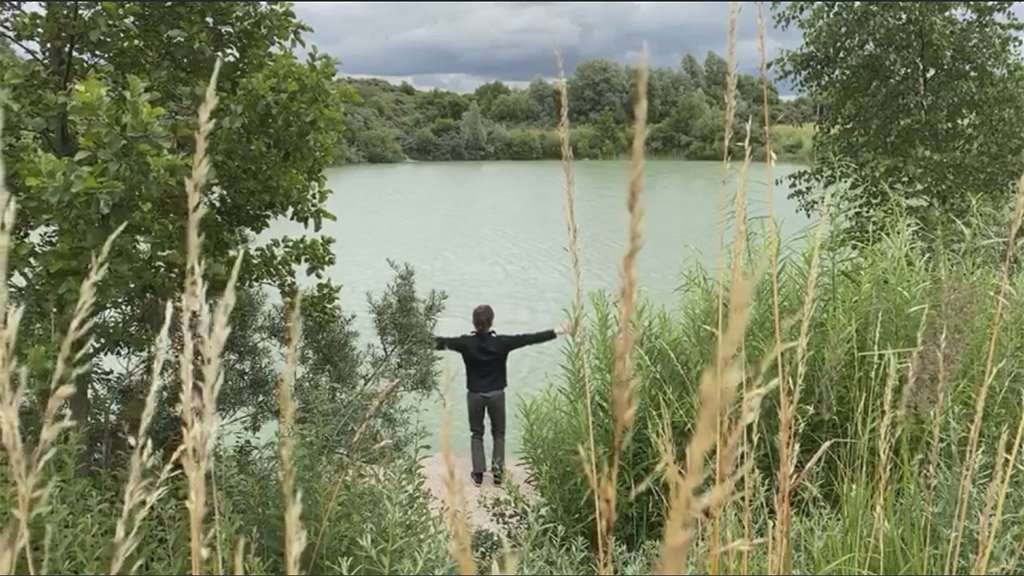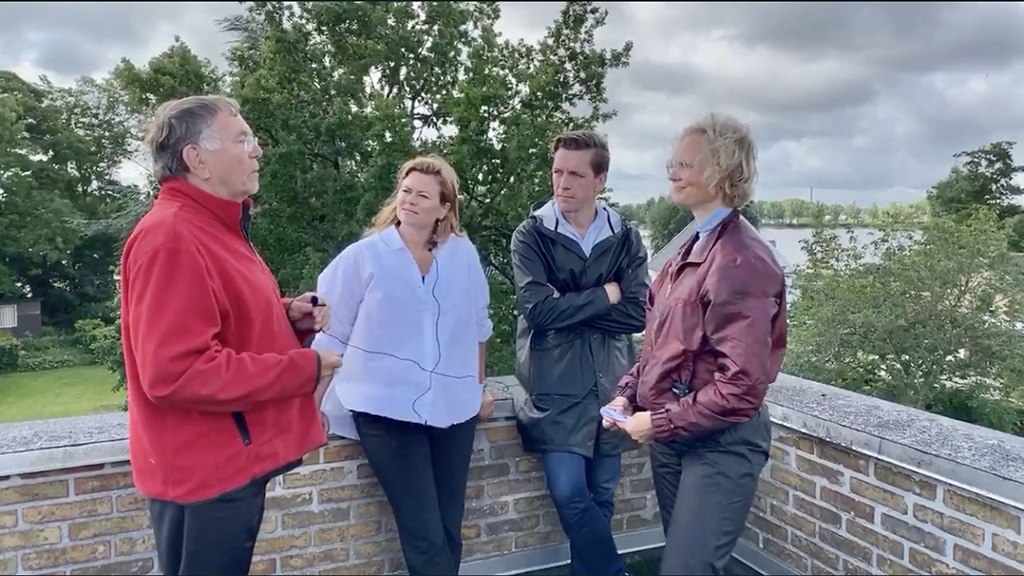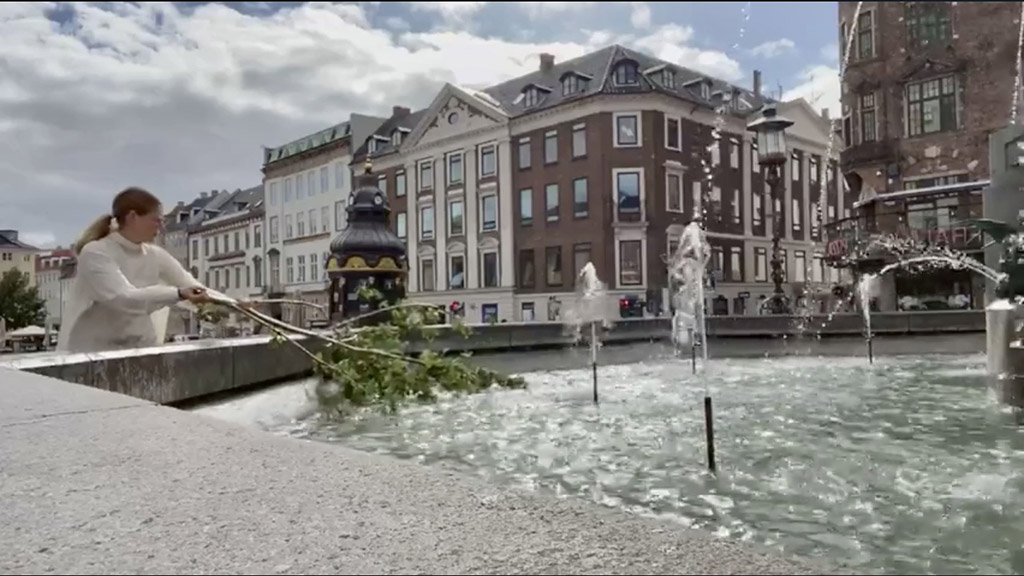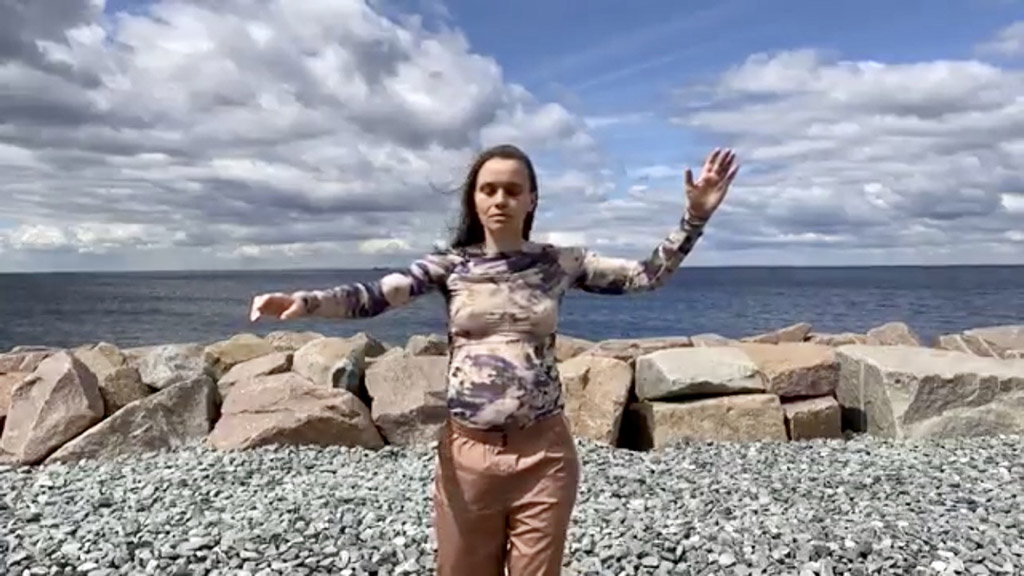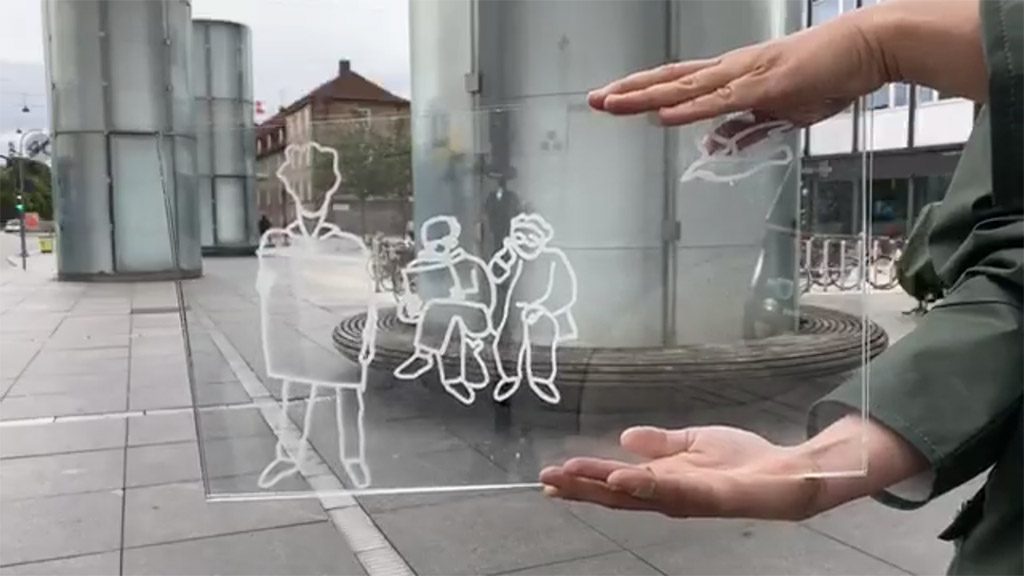Wa(l)king Copenhagen 30 June-9 July – reflections and videos
The grass is (almost) always greener on the other side of the screen
This cycle focuses on diversity in plants and humans. We walk along green routes out of the city, talk about dreams and moon influences, look for edible plants and see examples of places in the city where the wild nature has disappeared.
By Mille Højerslev
Currently I am writing from a different home than the one I have been writing from so far. I have traveled to the South of France to spend the next few weeks with the in-laws. My son longs for his grandparents. And my boyfriend, who has never got used to the darkness and cold in Denmark, longs for the dry landscapes, the light and the heat that make man and nature merge. And I myself long for the mountains.
In her video walk, landscape architect Rikke Juul Gram asks all of the people she has agreed to meet on her trip out of one of Copenhagen’s green wedges in the direction of Porsemosen, where they come from. She does this because she believes we have something with us from where we come from, which is reflected in the way we experience and live in the city. Among others, she talks with Minister of Housing Kaare Dybvad, city architect Camilla Van Deurs, ‘Copenhagen snob’ writer Holger Dahl and visual artist Heine Skjerning, who all give different views on the city’s relationship to nature and Copenhageners’ relationship to the landscape in this time where we have kept distance from each other and lacked space between the houses.
Along the way, Gram plants thirteen small beech trees (“incubator trees” she also calls them because they are so small) that will show Copenhageners out into nature. The talks point in the direction of the need for new political priorities that improve the quality of life for the city’s residents – including the green ones. But one answer differs from the others. It comes from assistant Signe, who is behind the camera. “One’s own choice also means something,” she says. She comes from Nor in Odense, but usually says that she comes from Aarhus. For that is where she herself has chosen to live. Or put another way by Trevor Davies, who is the co-director of Metropolis: “It’s about always having your narrative with you and developing your story”. This is how the landscapes we grew up with and then grow into lie like roots inside our bodies. Throughout life they grow; the roots spread and propagate in new places across seas and borders.
A minority in the city
You have to create yourself, your world and your surroundings if you are not part of the majority. Filipino-Swedish Sebastian Care / Paolo de Venecia Gile knows this. They do not define themselves within the binary gender categories. We start in the dancer, choreographer and dragking’s apartment. Or that is, Paolo de Venecia Gile’s apartment. Paolo is ill and Sebastian Care is a substitute. Sebastian is located in an inflatable pool without water overlooking a blue sky. They have brought the mirror Meer and the stone bag Martha, which also comes with us on a trip, as they later move out to explore the urban space. Meer manages to get quite dirty along the way and is cleaned with disinfectant spray, and so do a rubbish bin and a bench on the Queen Louise Bridge.
The purpose of the video walk is to highlight various details of the urban space and enlarge their volume. Stereotypical representations of homosexuality and excerpts from an overheard conversation that turns into a song: “there are so many people”, which is performed on the densely populated Blågårdsgade, are among the highlighted and enlarged details. The video walk is perfectly ‘styled’, and Sebastian Care is in full control of his content and appearance – from the use of tools and props to his facial expressions.
But sometimes the beautiful surface cracks, and we become spectators to the grief and pain that comes with not being like most people. It shows, among others, when Sebastian walks past a group of men who smile, turn their heads and send long glances and perhaps make shouts as they walk by. Why Sebastian in his introductory video tells that they are nervous, is suddenly understandable.
Personification of a tree
Although trees have been on the ground longer than us, they are also part of a minority – at least in Copenhagen, where the wild nature is threatened. I think about it while watching performance artist Nanna Rosenfeldt-Olsen pull a tree around the city like an amputated arm or a dead dog. As the walk progresses, the tree becomes personified. It gets to drink water in fountains and in parks. It visits the subway and drives up and down the escalators. It makes sounds that resemble music when its branches beat against a fence. And in that way, awareness and respect arise for the nature that we in the city may take for granted in our everyday life, because our own lives seem more important.
Wild nature in the urban space and the lack of the same
The grass is not greener on the other side of Camilla Berner‘s screen. The visual artist revisits old projects carried out in the period 2011-16, where she has mapped places with wild nature and planted gardens with wild plants in the city’s abandoned and untouched spaces. Through photographic documentation, she shows what it looked like when she worked on the sites, and reveals to us what it looks like today. The conclusion is that there is not much left of the overlooked and wild.
In several of the empty areas that Berner visits, urban renewal is underway; either new homes have already been built, or new constructions are in full swing. Yet there are a few wild relics left. In the first place Berner visits, for example, a Japanese willow-herb shoots through the asphalt outside the kindergarten that has been built.
Berner’s idyllicization of the past and critique of the present create a good opportunity to reflect on what types of green oases we want in the future, and what we can do to create such spaces ourselves and together. Doesn’t it say a lot that the neat areas that Berner visits are almost empty of people, while the people of the city flock to Amager Fælled, and more people have opened their eyes to Sydhavnstippen?
The political and activist perspective is dominant in Berner’s walk. But the perspective also follows an attention to the plants we have in the public space; for example goat’s ram, pea flower, odorless chamomile, giant bear’s claw, corn poppy, cornflower, royal jelly, clover and white-painted goose foot. It is up to us Copenhageners how we want to help protect the wild nature in the city – together and separately.
Sleepwalking mode and dream interpretation
If we have walked around at home and been half awake and half asleep in our attempt to maintain a reasonably normal everyday life during COVID-19, then what dreams do we take with us into the waking state? Are there dreams that have come true? Are there dreams that have burst? Those are the questions that author Rikke Oberlin Flarup asks herself and a number of friends and colleagues, all the while collecting dreams from the people she meets and talks to on her walk. Among others, we hear about a dream where an infant is born and runs directly up into the Norwegian mountains to disappear from civilization. And about an adult grandson who is a teacher at a folk high school and thinks of himself as empathetic but is criticized by his grandmother for not being better at listening to his students. They all sleep in a ‘community bed’ and the duvets are landscapes.
Labyrinthine paths through the corona crisis
As with visual artist Jytte Høy, author, historian and activist Rebecca Solnit is a reference to dancer Marie Topp. In her walk, Topp highlights the labyrinthine and dizzying feeling one can experience when walking without a specific purpose: “A labyrinth is a symbolic journey (…) but it is a map we can really walk on, blurring the difference between map and world” is one of the quotes she pulls out. The quote comes from the aforementioned author’s book Wanderlust (2000).
Topp relates to the labyrinth as a theme through various stagings of space, movement and quotes from other authors such as Jorge Luis Borges and Inger Christensen. Precisely this focus seems relevant at this time, when we especially need to find our own ways around the government’s recommendations. I am actually in doubt as to whether or not I have defied the recommendations of traveling out of the country. Topp captures and awakens in me the confusion, claustrophobia and frustration associated with this strange time.
No Roskilde Festival, but lots of ‘orange feeling’
With the open borders, many talk about the summer not being canceled anyway. But it may be for those who had a ticket for this year’s sold out Roskilde Festival. Director, choreographer and photographer Jacob Stage explores the city to find ‘the orange feeling’, which is difficult to describe and pass on if you have not been to the festival and experienced it on your own body. He finds the feeling in the small things: in old photographs, a spontaneous and surprising musical experience in a tunnel, running, playing and jumping through puddles, ‘live-painting’ on plexiglass and attention to works of art reminiscent of a work that could be curated for Roskilde Festival.
As I watch, my own Roskilde experiences come closer. But I also think of my evening walks in Frederiksberg Have, where I have seen young people gather in an attempt to create a festival atmosphere. From every corner of the garden I have heard drunken voices and Medina’s voice flowing from the speakers. The difference today is that the young people go home and take a shower and disinfect their purchased beer.
Mother and daughter and the edible plants
Visual artist Maj Horn has taken a trip to the area around Utterslev Mose to collect herbs, fruits and mushrooms. The soil here is wet and nutritious, and the marsh contains plenty of food – probably more than what the two show and convey. Horn has allied herself with her mother, Charlotte Horn, who is a landscape architect and something of an expert in edible plants. The way Charlotte Horn shares her knowledge is incredibly generous.
On their walk around Utterslev Mose, mother and daughter find e.g. wild strawberries and wild raspberries, dandelions, which in taste are reminiscent of arugula, squatter cabbage, sagebrush (also known as “poor man’s pepper”), which can be used as a spice, wild onion, elder and red clover. After watching the videos, I feel ready to go out and pick and eat nature. Thus, the walk is a reference work that one can return to for information.
Out in nature and under a highway
Dancer Mathias Theisen explores the landscape near his home in Trekoner. We walk on paths, but are also led away from the paths and into forest-like areas and out into fields. His movements are diverse, but they all revolve around the slow and repetitive.
In one of his first videos, he makes a movement that looks like he’s aiming for a shot put, and I feel for a moment as if I’m watching the Olympics. In the next video, he is in an amphitheater, and his movements in this coded landscape make me think of ancient Greece and the ancient obsession with sports, youth and beauty. We get out into nature, into woods, into fields, at the top of a hill overlooking a light blue lake and walk back and forth over a bridge and end up in an industrial area under a highway. It is almost as if I can smell the gasoline through the screen after spending most of the day in the green.
From a lone bird to mass gathering
Mo Maja Moesgaard makes small interventions in the quiet corona-affected everyday life with spontaneous drawings on plexiglass and makes us look at the present with the eyes of the recent past. At some point during the day, we find ourselves in a residential area. In the lower left corner of the plexiglass sits a bird eating from the ground. A new piece of plexiglass is put on top, and Moesgaard draws a silhouette of a person. Then one more and one more, so that eventually a group forms. Two people holding a sign. Are we at the #BlackLivesMatter demonstration? This shift between the two diverse moods surprises in the same way that the demonstrations did. From meeting few or no one in the street, suddenly in the course of two weeks several thousands gathered. In another situation we are at a bar. At the other end of the room sits a man reading a book. While we are at the bar, Moesgaard draws two girlfriends with a beer in one hand and a cigarette in the other. She also has to draw the ashtray. I come to think of the time before the corona, where there was no requirement for social distance, but where one might also pay less attention to others.
Everyone has a relationship with what they see
Overall, the walks in this cycle inspire us to dare to explore and embrace the landscapes around us; to take new paths and not follow in the same footsteps; see how far you can actually get out of the city and into nature on foot; pick dandelions and squatter cabbage on the walk and eat them as a salad in the evening; or cook soup on nettles.
But the urge to get out into nature, where the sense of time dissolves and the past, present and future merge in a confusing and disturbing way, can also be transferred to a desire for change, a different kind of thinking and new perspectives on the time we live in. Which Trevor Davies also notes. “I think it’s a time that has always been here. We have just refused to recognize the feelings and situations in our lives”. His reflections also fit the current racism debate, issues of structural racism and #BlackLivesMatter.
20 July: Louise Haugaard Jørgensen
21 July: Georg Jagunov
22 July: Toshie Takeuchi
23 July: Eja Due
24 July: Jenny Gräf Sheppard
25 July: Ana Weber Henriksen
26 July: Anu Ramdas
27 July: Camilla Nørgård
28 July: Falke Mikailsen
29 July: Sara Hamming
The walks continue until 10 August with a new artist every day.
Follow live on www.facebook.com/walkingcopenhagen.
Read more.
SELECTED VIDEOS
30 June: Rikke Juul Gram
1 July: Paolo De Venecia Gile
2 July: Marie Topp
3 July: Marie Topp
4 July: Jacob Stage
5 July: Rikke Oberlin Flarup
6 July: Mo Maja Moesgaard
7 July: Nanna Rosenfeldt-Olsen
8 July: Mathias Theisen
9 July: Maj Horn



